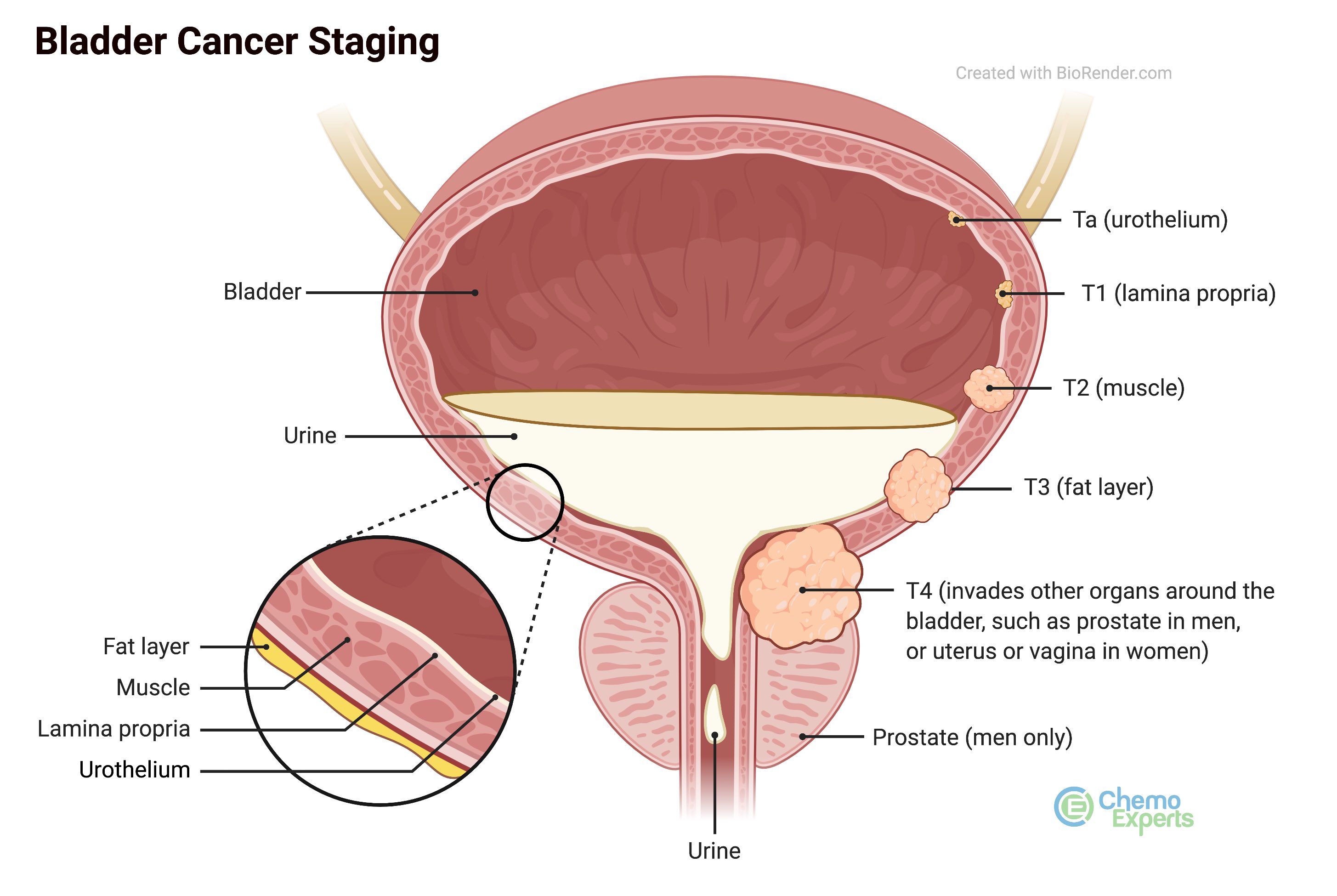A disease of the cells that line the inside of the bladder. Bladder cancer is a rare disease that is most commonly seen in older adults. It is known to cause blood in the urine in up to 90% of patients at diagnosis. Causes of bladder cancer include smoking, exposure to certain chemicals (arylamines), and chronic bladder infections.
Treatment includes surgery (full or partial removal of the bladder), chemotherapy, immunotherapy (giving certain vaccines into the bladder), or thermotherapy (heating the lining of the bladder combined with chemotherapy). The stage of bladder cancer can vary at diagnosis and throughout treatment. Bladder cancer is staged using the Tumor, Node, Metastasis (TNM) system, as well as Stage Grouping 0, I, II, III, or IV. Staging systems describe the extent of cancer throughout the body and help doctors determine which treatments to offer. The effectiveness of the treatment may depend upon the stage at diagnosis.
Non-Muscle Invasive Bladder Cancer (NMIBC):
- Cancer cells confined to the bladder's inner lining (mucosa) and have not moved beyond the lining and deeper into muscle tissue.
Treatment:
- May include a procedure known as Transurethral Resection of Bladder Tumor (TURBT) to remove the cancer cells, which may be followed by intravesical BCG therapy (link to this regimen shown below) to reduce recurrence risk of the cancer coming back.
Muscle-Invasive Bladder Cancer (MIBC):
- Cancer cells have grown into the muscle layer of the bladder wall, or beyond the bladder.
Treatment:
- May involve chemotherapy regimens, as shown below, surgery (to remove part, or all of the bladder), and/or radiation.

NOTE: Treatment Options listed below are not all-inclusive. Other treatments may be available. ChemoExperts provides drug information and does not recommend any one treatment over another. Only your Doctor can choose which therapy is appropriate for you.
 +
+
 +
+